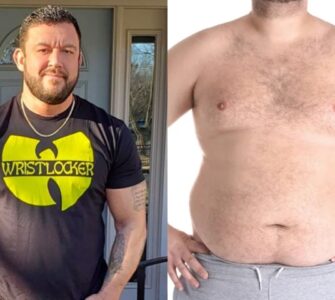You wake up at 5:45 a.m., the alarm blaring. Your first conscious thought is one of dread –
your morning jog is minutes away, and in this moment pounding pavement isn’t nearly as appealing as
your warm bed. Convinced that what you really need is more sleep, you effortlessly jab the snooze
button – no permanent harm done, right?
At work, you realize your morning jog could be done that evening; however, after work you
come to the conclusion that sleep is better justified than working out, because how much of a benefit
is working out when you’re tired? Even though this same situation has occurred all but two days in the
last three months, you’re convinced it’ll change now that summer is coming around…
Most people can relate to the story above. It’s a “plotline” that most of us have acted out plenty
of times. We put things off a little at a time, rationalizing the pros and cons of our situation. Initially,
we don’t see the bigger issue; we haven’t given in to “procrastination” the first time it happens – or so
we convince ourselves. But over time, the situation becomes recognizably grim, and yet another diet
or exercise routine falls by the wayside.
The disappointment and frustration we experience is often a result of where we point the finger
of blame, which is usually at ourselves or at the seemingly difficult situation in which we find
ourselves. This “logistical blame game” is one that we have all experienced, but if we stop to honestly
view this negative cycle of procrastination, blame, and resignation, most of us can admit that it’s a
waste of invaluable energy and time.
But there always exists the possibility of change for those who are open to new insights and
ideas. Those who recognize this chronic stagnation and are, at the very least, open to a fresh
perspective may find a very useful and proactive approach through the central ideas that have been
proposed through the relatively new science of Positive Psychology.
Bridging Positivity and Optimism with Health and Fitness
The term optimism may invoke an image of yellow smiley faces and an idealism that doesn’t
translate to real-world experience; however, in the eyes of Dr. Seligman, founder of Positive
Psychology and head of the Positive Psychology Center at the University of Pennsylvania, optimism is
not a belief that everything is or ever will be 100 percent ‘peachy’; instead, the term can be attributed
to individuals who are able to cope with and handle problematic situations effectively.
Such an approach to life leads to what we could say the ‘stuff’ of optimism is ‘made of’ i.e.
positivity. Barbara Fredrickson, a researcher with the University of North Carolina at Chapel Hill and
leading expert in the field, believes that positivity is not characterized as an absence of negative
emotion. In other words, people who embody “positivity” do not neglect pain and hurt – they simply
don’t allow negative emotion to completely overshadow positive emotions. For Frederickson, the
optimistic person is one who doesn’t let negative events set them off-kilter emotionally, but who
retains a degree of positivity in the midst of negativity. Such individuals are better able to understand
the place of negative events in the more holistic picture, and are even able to recognize positive
opportunities in the face of challenging circumstances.
Pulling from the gauntlet of developing research posed by Dr. Seligman and Frederickson, I
pose a few plug-and-play ideas for increasing positivity – a working out of your ‘mental strength’ that
can lead to lasting changes in the realm of health and fitness:
1. Connect with others. Supporting research shows that just being around other people –
surprisingly, both those we know well and those who are new acquaintances – makes us more
positive. Optimists tend to spend significantly more time with people whom they care about, be it a
romantic partner, siblings, friends, family, or a combination. Being around others who support your
fitness and lifestyle changes – and who ideally can serve as an accountability partner – tremendously
increases the likelihood that a health change will stick.
2. Develop a list of Distractions. Sound counterproductive? Not when you’re distracting
yourself from negativity and excessive rumination. The best distractions are those that demand the
entirety of your attention and do not allow for extraneous negative thought. Fredrickson recommends
writing down a list of “healthy” and “unhealthy” distractions that you know will snap your mind out of
any such thought track. Preferably, the “healthy” distractions, i.e. getting lost in a good book,
practicing your favorite sport, etc., take precedence over “unhealthy” distractions, i.e. watching an
engrossing TV program, playing a video game online, etc., but the unhealthy distractions can serve as
a good secret weapon when nothing else seems to be working.

















